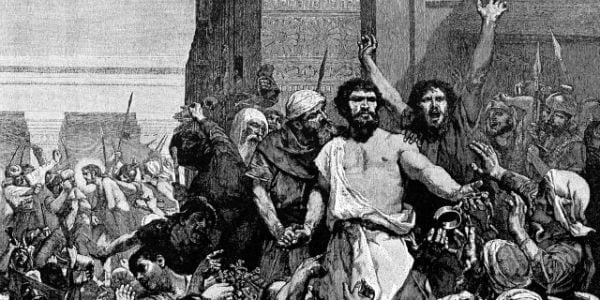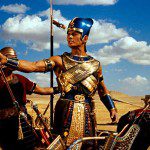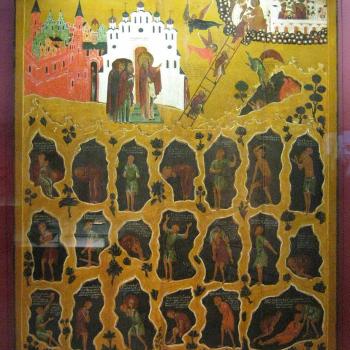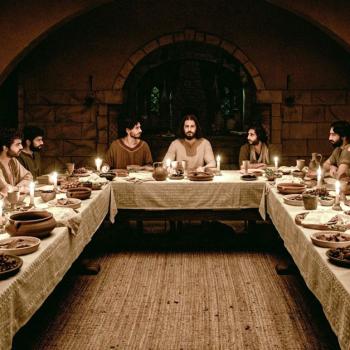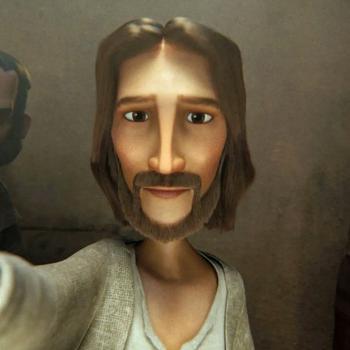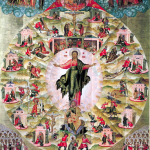During this Holy Week, we’ve had competing versions of the trial and Crucifixion of Jesus — NatGeo Channel’s “Killing Jesus” (which repeated on Good Friday and on Easter Sunday, April 5, on Fox News Channel), and the Easter premiere of NBC’s 12-part “A.D.’: The Bible Continues.”
As I outlined in my review of “Killing Jesus,” it takes out all the supernatural parts of the story of Christ, supposedly focusing on the sociopolitical forces surrounding Christ’s ministry and death. “A.D.,” produced by spouses Mark Burnett and Roma Downey, who also did History’s “The Bible,” is a sacred retelling of Jesus’ story and the founding of the early Church, miracles and all.
Well, not quite all.
Although the two productions come at the Gospels from different angles, they both have the same person missing — Barabbas.
As described at CatholicCulture.org:
“A notorious prisoner,” Matthew described him (Matthew 27:16-17). John called him “a brigand” (John 18:40-41). Mark and Luke both said that he was in prison as a rioter and murderer (Mark 15:7-15; Luke 23:19-25). When Pilate questioned Jesus at his trial and could find him guilty of nothing, he offered the people the choice of freeing Christ or Barabbas, hoping that the latter’s notorious reputation would induce them to release Christ. But, whipped into fury by their chief priests, they insisted that the guilty man be freed and the innocent die. (Etym. Aramaic bar’ abba, son of the father.)
The omission is especially puzzling in “Killing Jesus,” since the freeing of a prisoner by public acclamation during the Passover was a very political move by Pilate in general, and especially when he applied it to the case of Jesus. With Barabbas in the mix, the responsibility for Jesus’ execution is spread among the Jewish high priests and elders, headed by Caiaphas; the Roman Empire, represented by the regional governor, Pontius Pilate; and the people in the crowd, which was likely heavily weighted in favor of Barabbas’ supporters.
After all, as a post at CatholicMoralTheology.com points out:
Why is it that, when confronted with a choice between that which draws us toward God and that which draws us away from God, we opt for the latter?
Perhaps we fail to recognize the choice for God as such because we expect that choice to look very differently. We construct our divine expectations to fit our own agenda rather than being open to discovering God’s agenda.
For the crowds in Mark’s Gospel, how could Jesus be the Son of the true Father without military might? How could the Messiah be such a simple man, and one so seemingly weak and defenseless in the custody of Pilate? We convince ourselves we are not moving away from God because God is not one of the choices. We rationalize it as an offense to God when the image of human weakness somehow claims identity with divine omnipotence. And yet, it may be our own assumptions that are offended, not God’s.
Then why, in a movie that strips out miracles and divinity in favor of politics, is such a political figure as Barabbas — represented in tradition as a Zealot, who were enemies of Roman rule — excised from the story?
We don’t know. I could speculate that it’s a case of modern political correctness, leaving the blame for Christ’s death among a small number of leaders, rather than spreading it around to the Jewish people gathered in Jerusalem at the time — but that’s just a guess.
When it comes to “A.D.,” though, I went right to the source and asked Burnett about the omission. Here’s his emailed response:
Sure. We originally allows three minutes of flashbacks to reset Crucifixion and to focus on Resurrection.However, it expanded. I think that there were seven trials, and we really couldn’t include everything.It was all about brevity and the line, “Truth. What is truth?” We did not want to distract from this.So much to include. So little time. It’s very hard to make these choices. In the end it’s all about driving the story forward.Our role is like Mark 4. We tell big parables. Tens of millions at a time on TV and many seek more details in smaller groups (churches).


